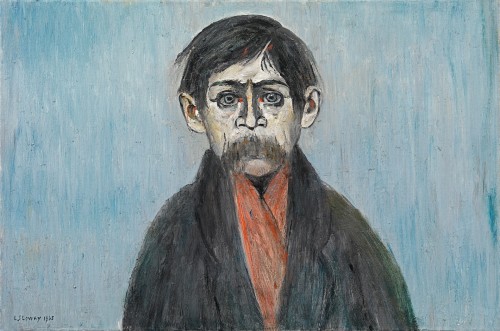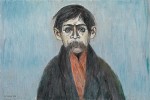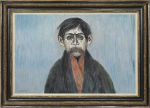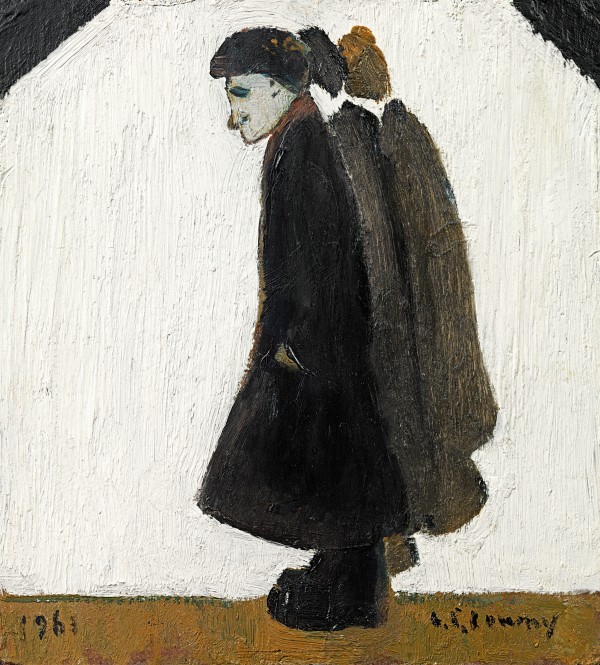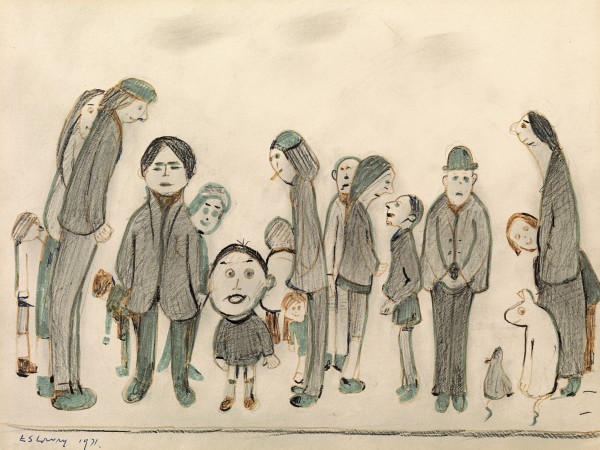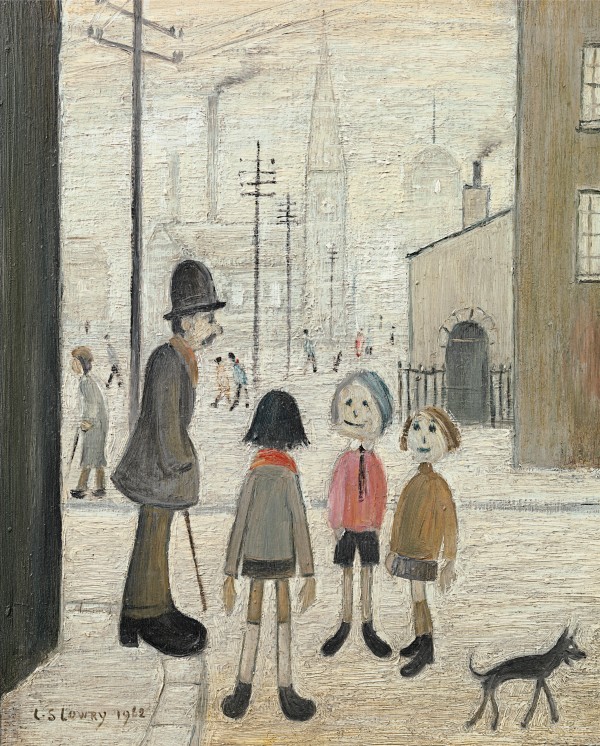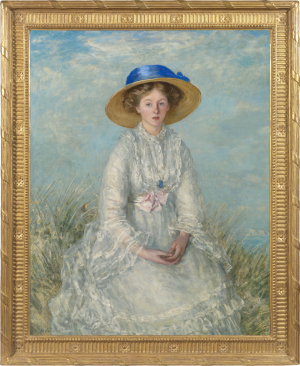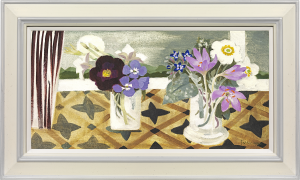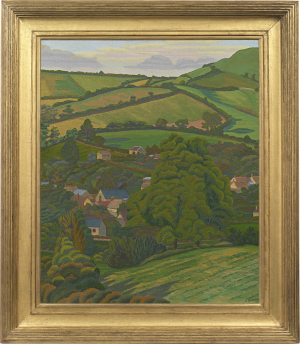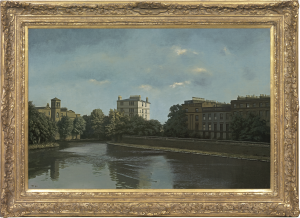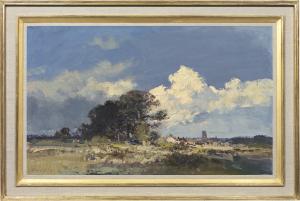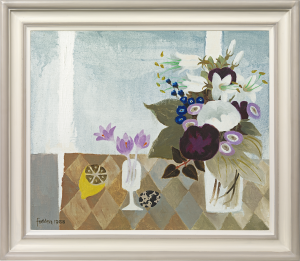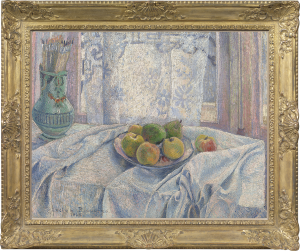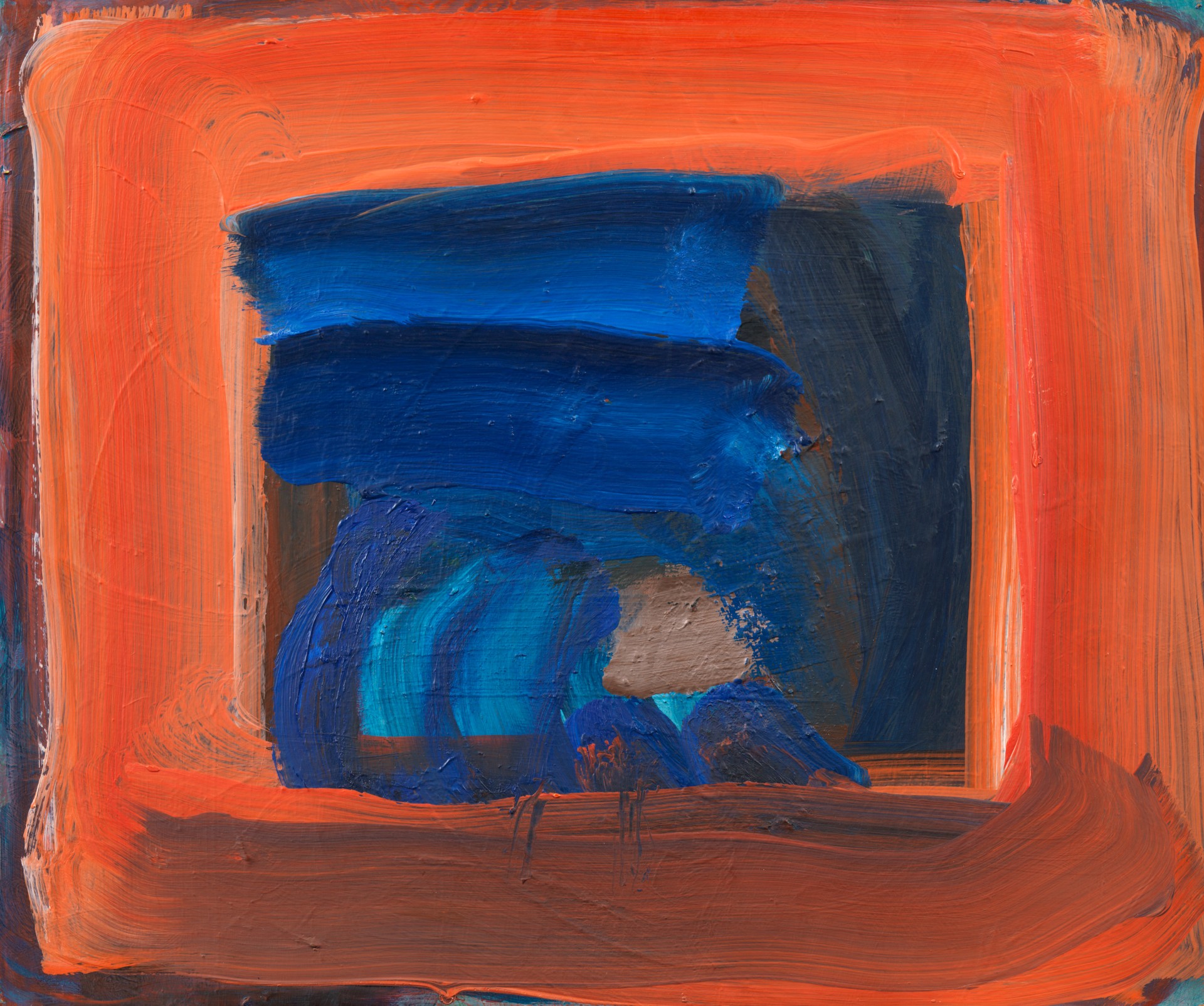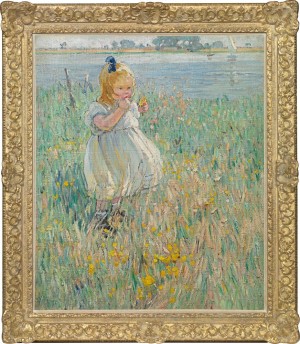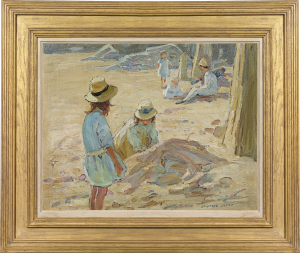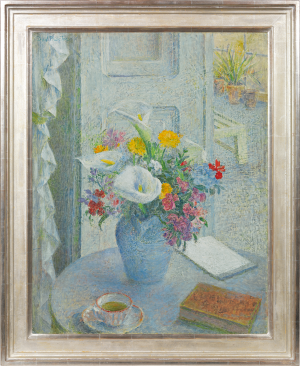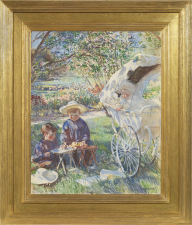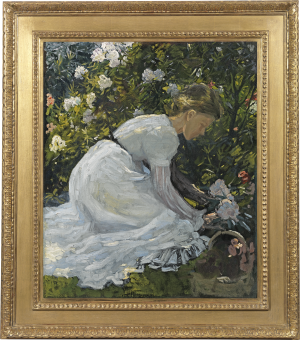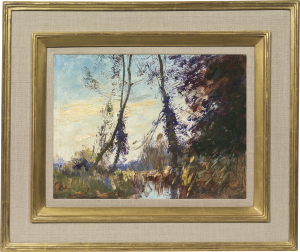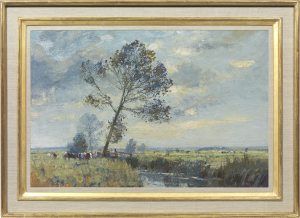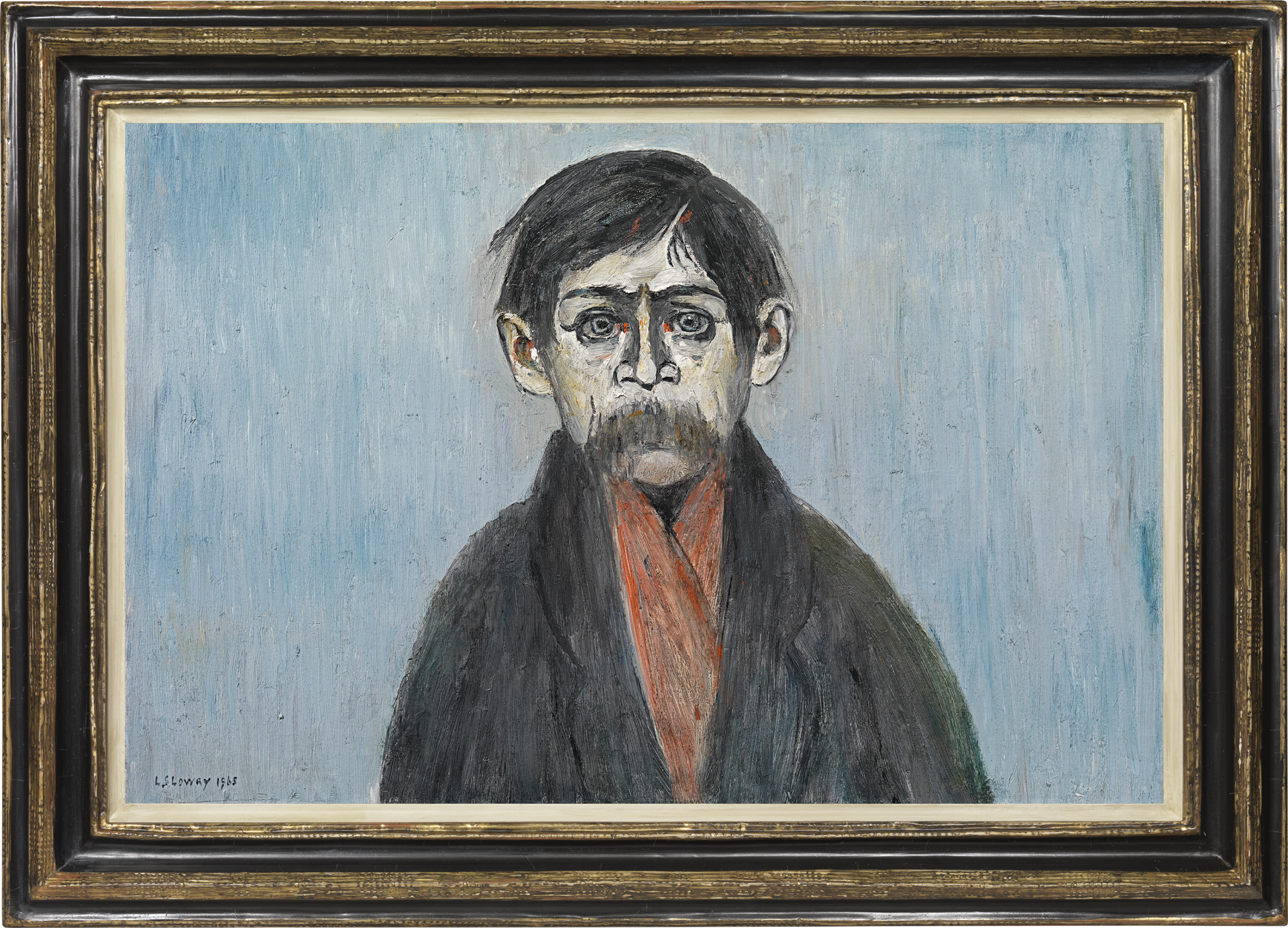Laurence Stephen Lowry
Head of a man
Oil on canvas: 20 x 30 (in) / 50.8 x 76.2 (cm)
Signed and dated lower left: L.S. LOWRY 1965; inscribed on the stretcher: 5 HEAD OF A MAN
This artwork is for sale.
Please contact us on: +44 (0)20 7493 3939.
Email us
LAURENCE STEPHEN LOWRY RA RBA LG NS
Manchester 1887 - 1976 Glossop
Ref: CA 196
Head of a man
Signed and dated lower left: L.S. LOWRY 1965;
inscribed on the stretcher: 5 HEAD OF A MAN
Oil on canvas: 20 x 30 in / 50.8 x 76.2 cm
Frame size: 26 x 36 ¼ in / 66 x 92.1 cm
In a black and gold Nicholson style frame
Provenance:
Lefevre Gallery, London, 1st February 1966, directly from the artist [X 8352];
private collection, 13th June 1973, acquired from the above
Crane Kalman Gallery, London
Sotheby’s London, 7th November 1990, lot 137;
private collection, UK, acquired from the above
Exhibited:
London, Lefevre Gallery, Paintings by LS Lowry RA, 11th May-3rd June 1967, no.5, illus. p.6
London, Crane Kalman Gallery, LS Lowry – Heads, 26th April-3rd June 2000
A searing portrait of modern masculinity, Head of a man, 1965, is an iconic image of vulnerability and introspection for the twentieth and indeed the twenty-first century. Its power lies in the directness of its representation and connection with the viewer, as well as in the honesty of its expression. The head and shoulders of a somewhat dishevelled, middle-aged man are presented fully frontal against a fluctuating blue ground directly engaging with the viewer. A flowing screen of light blue pigment rains down in vertical strokes beyond the preoccupied figure, enhancing his penetrating gaze. Thick black lines articulate his features, given relief by more subtle grey shadows and dynamic touches of ochre and vermillion. Like many of Lowry’s figures, the man wears a large black overcoat, his sloping shoulders echoed in the curves of its deep collar. A faded red scarf crosses over his chest, drawing our attention to fragmentary echoes at his eyes, ears and even in his hair. Though the image’s immediate impression is stark, more sensitive detail is revealed by further contemplation; his roughly textured chin, scored by careless shaving below his feathery moustache. His beautiful eyes, which first appear graphically drawn, are contoured with layers of meticulous strokes following their shape with Lowry’s full spectrum of colours.
Head of a man is a panoramic return to Lowry’s male portraits of the late 1930s, such as Head of a man, 1938 (private collection) and Head of a man (with red eyes), 1938 (The Lowry, Salford), ‘one of the finest of Lowry’s imaginary portraits completed shortly before the death of his mother. The artist confessed that it was really an emotional self-portrait. ‘It was just a way of letting off steam, I suppose’, he remarked to Mervyn Levy.’[1] Levy writes that Lowry’s portraits, ‘irrespective of the sitter or the sex of the subject, become synonyms of his own personal isolation and loneliness.’[2] Judith Sandling , formerly Keeper of the Lowry Collection at the City of Salford Art Gallery, concurs, ‘the sitter is rarely identified but frequently portrayed with staring eyes and a sombre mood. Lowry considered these works to be somewhat emancipating as they offered an opportunity to express his moods and the resulting works are remarkably personal and honest.’[3] Head of a man, 1965, shares with these tormented earlier images the same side-parted hair, furrowed brows and wide eyes, though the figure is now less gaunt, more careworn than a case for concern. Painted nearly thirty years later, it seems possible that Lowry, now a commercial and critical success, returned to the subject while thinking about the Arts Council retrospective of his work which toured the UK from 1966-67, starting in Sunderland and ending at the Tate in London, and for which the current painting was considered.[4]
LS Lowry, Head of a man, 1938
© The Lowry Collection, Salford
LAURENCE STEPHEN LOWRY RA RBA LG NS
Manchester 1887 - 1976 Glossop
Sir Hugh Casson, in his preface to the 1976 Royal Academy Memorial exhibition, referred to L S Lowry as ‘one of the great English painters of this century.’ An individual artist with a unique style, Lowry’s work spans the first half of the twentieth century, recording with sensitivity and wit his own personal view of the people and architecture of the industrial north.
Born in Manchester in 1887, Laurence Stephen Lowry was the only child of Robert and Elizabeth Lowry. He started drawing at the age of eight and in 1903 began private painting classes which marked the start of a part-time education in art that was to continue for twenty years. In 1904, aged 16, he left school and secured a job as a clerk in a chartered accountants’ firm; he remained in full-time employment until his retirement at the age of 65. His desire to be considered a serious artist led him to keep his professional and artistic life completely separate and it was not disclosed until after his death that he had worked for most of his life.
Lowry’s early training was at the Municipal College of Art, Manchester. There he was taught by the French artist Adolphe Valette who introduced him to Impressionism and of whom he said: ‘I owe so much to him for it was he who first showed me good drawings by the great masters…he gave me the feeling that life drawing was a very wonderful thing.’ Lowry was, however, unaffected by Valette’s impressionist technique and continued to develop a more realistic approach to his art. In 1909 Lowry and his parents moved to Pendlebury, where initially he was not happy, and for some years ignored his surroundings. In 1916, whilst waiting for a train, he became fascinated by the workers leaving the Acme Spinning Company Mill; the combination of the people and the surroundings was a revelation to him and marked the turning point in his artistic career. He now began to explore the industrial areas of South Lancashire and discovered a wealth of inspiration, remarking ‘My subjects were all around me…in those days there were mills and collieries all around Pendlebury. The people who work there were passing morning and night. All my material was on my doorstep.’
By 1920 Lowry’s street scenes, peopled with workers, housewives and children set against a backdrop of industrial buildings and terraced houses, had become central to his highly personal style. From now on he painted entirely from experience and believed that you should ‘paint the place you know.’ His leisure time was spent walking the streets of Manchester and Salford making pencil sketches on scraps of paper and the backs of used envelopes, recording anything that could be used in his work. In his early factory scenes the emphasis is placed on the buildings and the atmosphere was often dark and sombre; however, as he developed this theme the figures became more prominent and eventually he arrived at a marriage between the two where the figures and surroundings form a whole.
By the 1930s Lowry had established his own particular style. He was encouraged by his teacher Bernard Taylor to try to make his figures and buildings stand out more and he began to experiment with setting them against a white background. He chose ‘flake white,’ building up layer after layer on the canvas before painting the subject matter straight on top. He used only four other colours: vermilion, Prussian blue, ivory black and ochre, which he applied straight from the tube.
With the onset of the modernisation of the industrial north in the mid-1950s Lowry lost interest in his surroundings and now concentrated almost entirely on figures silhouetted against a white background, occasionally standing on a hint of a pavement or near a ghost of a wall, but frequently suspended in time and space. He continued to sketch and closely observe his subjects and his works from this period capture the essence of Northern people; he frequently mixes young and old and he imparts to each figure an individual character. Shelley Rohde in A private view of L S Lowry comments: ‘he had a new obsession, his single figures, his grotesques. The struggling, surging, misshapen homunculi who used to live for so long in the shadow of the mills emerging at last from their background to stand alone, as he stood alone’.
Visits to Wales in the 1960s with his friend and patron Monty Bloom briefly revived Lowry’s interest in industrial scenes. He was impressed by the contrast between the industrial towns and the surrounding countryside; consequently his paintings from this period are brighter than his Lancashire paintings. However, towards the end of the 1960s Lowry began to lose his creative urge and, with the exception of the occasional moment of artistic inspiration, he ceased painting almost entirely.
Laurence Stephen Lowry died of pneumonia in 1976, aged 88. Although he had received critical acclaim for his work during the second half of his life, he never forgot the lack of recognition that he had received initially and he carried with him the feeling of isolation and rejection throughout his career. He refused the offer of a knighthood, as well as numerous other honours, and remained disillusioned with the art world despite the praise that was heaped upon him.
Lowry is remembered as a man of remarkable resilience and sensitivity; he stood alone, unaffected by the influences of other artists and his inspiration came entirely from his own experience. His paintings and drawings are now included in most important private and public collections in the United Kingdom and abroad and his unique works continue to receive the critical acclaim that he so richly deserves.
[1] Michael Leber & Judith Sandling, LS Lowry, Phaidon and Salford Art Gallery, London 1987, no.278, pp.130-131.
[2] Mervyn Levy, ‘Portraits’, The Paintings of LS Lowry Oils and Watercolours, Jupiter Books, London 1977, unpaginated.
[3] Judith Sandling writing on Portrait of a young man, 1961, in LS Lowry, exh. cat., Richard Green, 2002, no.9, p.34.
[4] Next to the title of the painting inscribed on the stretcher, Arts council has been written and crossed out.

